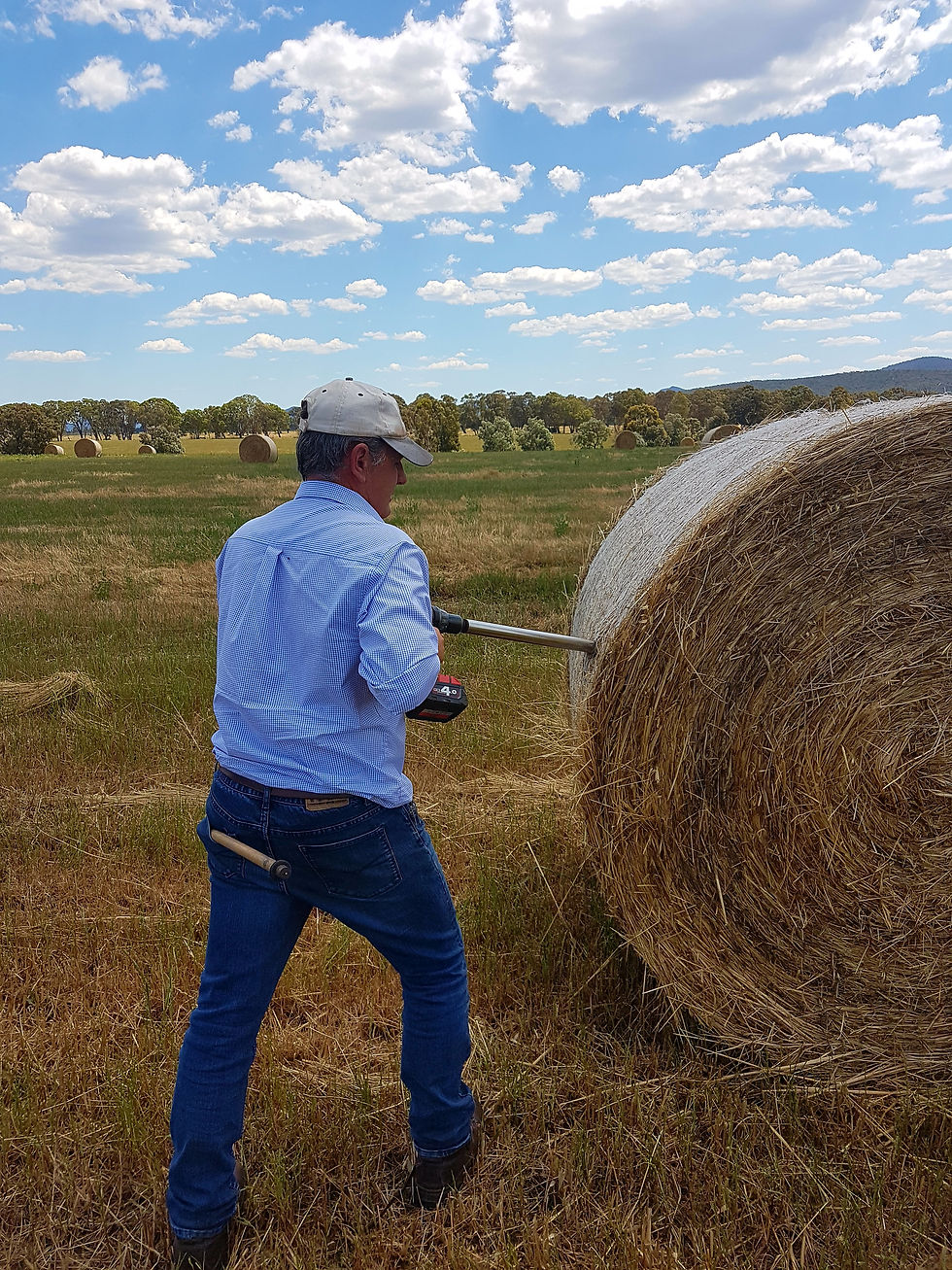Micro Minerals In Autumn Lambing Ewes
- Mark Facy

- Mar 2, 2023
- 3 min read
By Mark Facy, TRAC Business Productivity Consultant
As ewes get closer to lambing their energy requirement significantly increases far beyond what stubble and dryland can provide in both energy and protein, then during lambing the transition onto grass can throw a huge curveball as it introduces a major change to the diet during a critical period where consistency is preferred. Growing a lamb and then going through birth puts immense stress on the animal that utilises large stores of minerals. It is vital to set the ewe up to lamb and then replace lost minerals for longevity of the flock. Macro and Micro Minerals in ruminants are required in varying amounts with the Macro mineral levels required in their diet as a percentage of intake and usually in grams/kg of Dry Matter Intake, whereas micro minerals are required in much smaller levels, mostly measured in parts per million (ppm).
Availability of macro and micro minerals is dependent on many factors, some of which are environmental and influenced by dietary interactions, as well as levels of availability for which the elements are being utilised. Many of these determining factors are challenged and documented by many as to the availability being either dietary or supplemented sources, however what is recognised is ruminants require them.
The term ‘Oxidative Stress’ is used when discussing the pressure on ruminants when their micro mineral requirements are essential, for example when ewes are either being mated, carrying early pregnancies, or lambing, paired with the low levels of availability of macro minerals in many non-supplemented dryland grazing systems. For autumn lambing ewes in the southern grazing systems of Australia, access, and availability of these micro minerals through late summer is often low and ewes are potentially at high risk of Oxidative Stress depending on where in the production cycle they are and the potential consequences this poses to the longevity of the flock.
This is highlighted in the following graph:

Reference: “Practical implications of mineral and vitamin imbalance in grazing sheep”
- Underwood Memorial Lecture, July 2018. David G Masters.
As previously mentioned, macro and micro mineral availability and in what amount is extremely variable, it is recognised that some minerals are present in diets to meet requirements and do not require supplementation, but levels of others are often below production requirements, for example: Iron, Copper, Zinc, Cobalt, Manganese, Iodine and Selenium.
Functions of these micro minerals can be identified but not limited to the following:
Iron (Fe) – Increased requirement during pregnancy, bleeding increases requirement as does heavy intestinal parasite loading.
Copper (Cu) - Beneficial for reproduction and fertility, bone formation, immune system and cell respiration.
Zinc (Zn) – Plays an essential role in the immune system, cell membrane structure and cell functions, as well as the involvement in mobilisation of Vitamin A from the liver.
Cobalt (Co) - Pivotal in enzyme reactions, immune response, and the overall health of the nervous system, required daily for rumen microbes to manufacture Vitamin B12.
Manganese (Mn) – Has significant roles in formation of connective tissue, cartilage, bone development and tissue respiration.
Iodine (I) – A major component in manufacturing thyroid hormones, in turn impacting growth, development and reproduction, as well as muscle function, all significant during the lambing process.
Selenium (Se) - Involved in and enhances immune response, a natural anti-oxidant and has a role in resistance to viral infection.
Typical functions of micro minerals being the regulation of cell replication and differentiation and immune support. Both are critical elements to reproduction and foetal development, closely followed by early immune support of lambs through colostrum. In addition, minerals are in demand during the late stages of pregnancy for maintaining placenta, uterus and uterine contents.
Minerals, the Silver Bullet?
Not always, when we consider livestock production systems the objective is to ensure a correct balance of Macro and Micro Minerals are available at critical times to balance the immune system, support structural soundness and the efficient conversion of protein energy and fibre providing a healthy animal to underpin a profitable Livestock enterprise.
Requirements depend on age, growth rates, stage of pregnancy, immune challenges, heat stress and other such physical and environmental challenges as discussed.
When searching for answers to what may seem probing questions around mineral supplementation considerations of implementation, percentage, active levels, ratios, and the grazing environment are recommended. TPM’s Boost range of High Density Loose Lick mineral supplements are cost effective, with excellent water repellency qualities ensuring supplementation is available during challenging weather, often coinciding with high animal requirements. Our TRAC Consultants are equipped to assist.
To discuss how we can apply this information on your farm
please get in touch with one of our Experts In Ruminant Productivity
to tailor an individual plan for your animals this lambing.
Phone the TRAC Office on 08 8733 1888

Our Consultants
EXPERTS IN RUMINANT PRODUCTIVITY
Owen Rees
0429 437 823
Mark Facy
0427 243 320
Mikaela Baker
0457 243 319
To download a copy of this article, please click the link below...




Comments